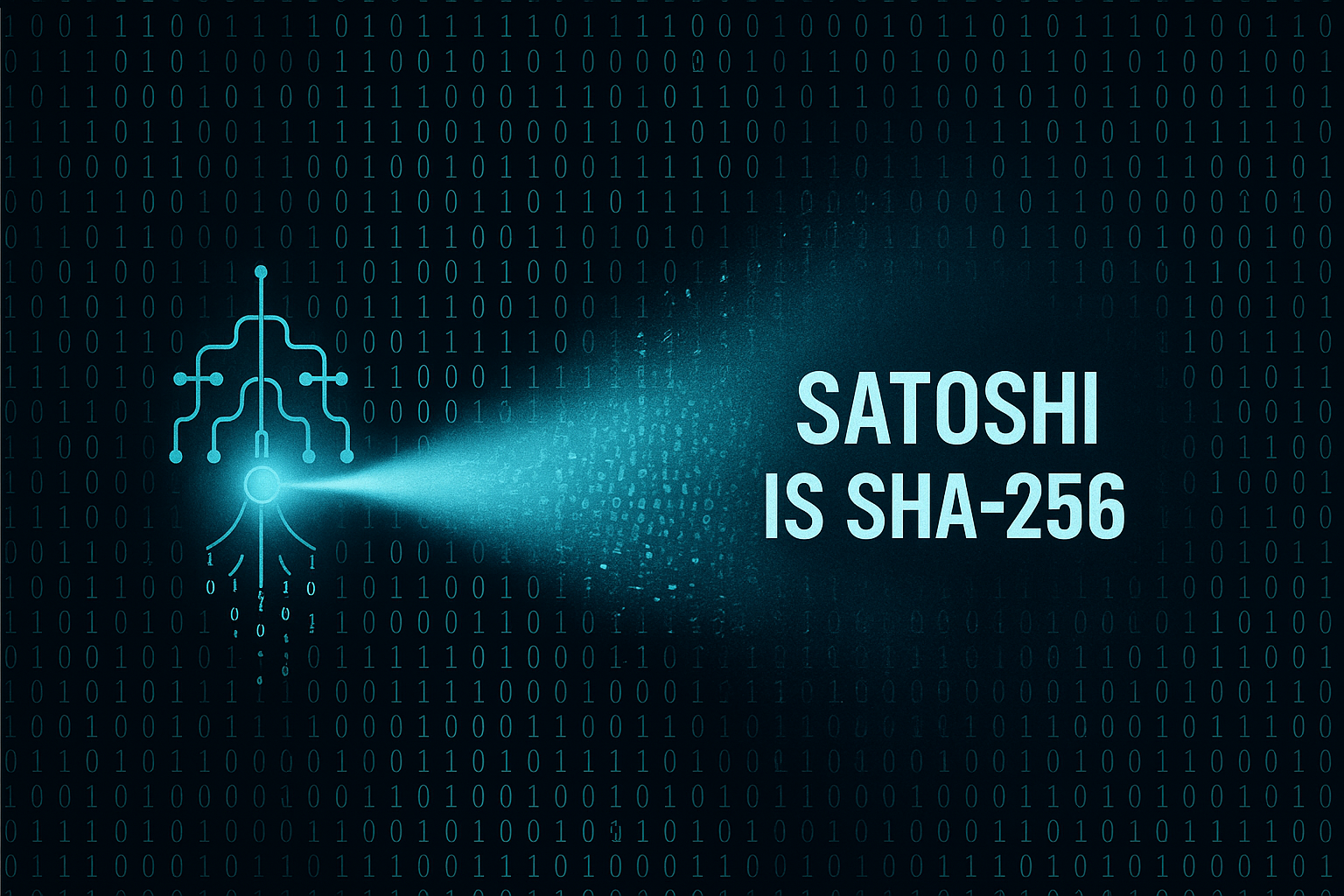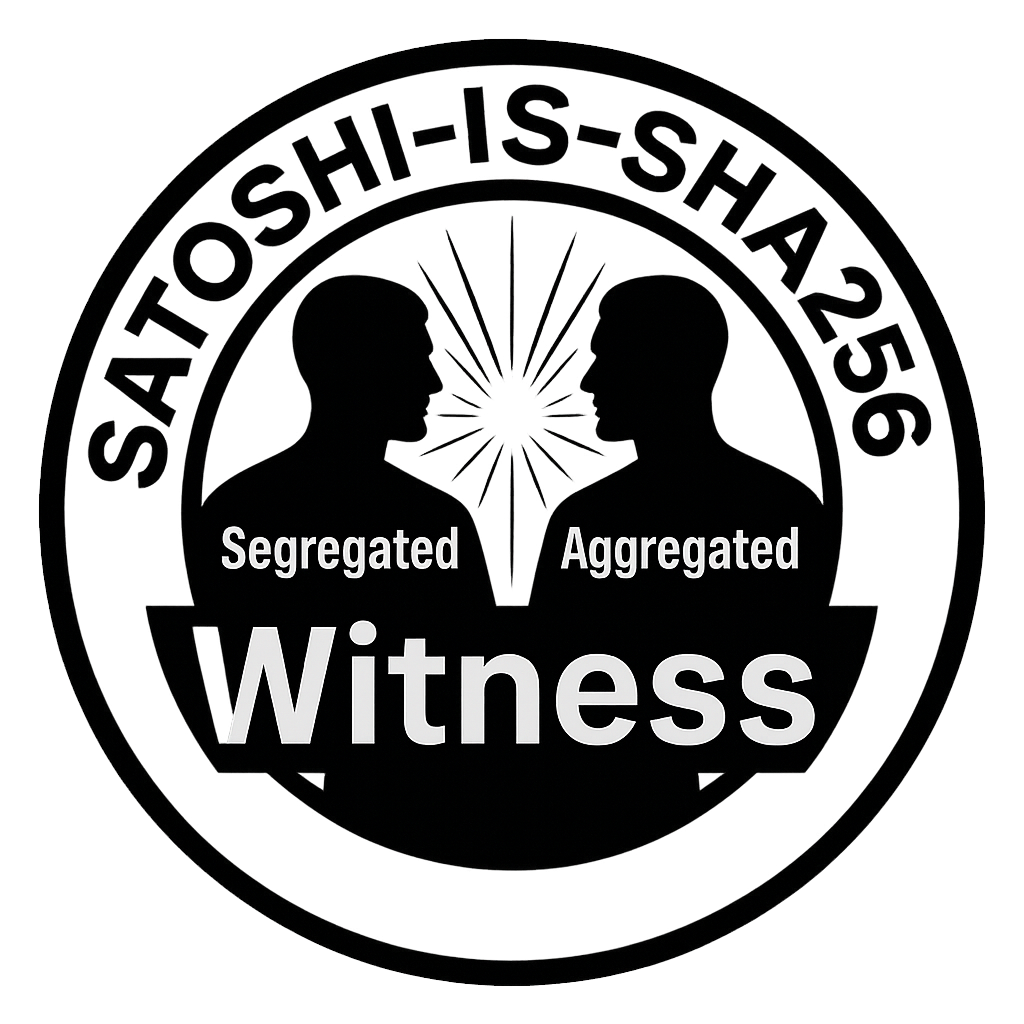Satoshi is SHA-256 | Name: SATOSHI-IS-SHA256 | Ticker: SS256

In the course of cryptographic research using quantum computers, an imprint was discovered inside SHA-256.
1. Discovery of a “semantically interpretable structure” within SHA-256
In principle, cryptographic hash functions such as SHA-256 must exhibit complete unpredictability. Any output that conveys interpretable meaning or contains meaningful structure is strictly prohibited.
However, the SS256 team has identified regions within SHA-256 outputs that exhibit such interpretable structure. Notably, the numbers 144,000 and 1.44 billion (1.44B) appear in a way that correlates with other structural patterns, forming a non-random chain of outputs.
2. Statistical deviation from normal outputs
At the moment of discovery, the output already felt unusual. Since the concept of a “stamp” (刻印) did not yet exist at that time, the anomaly was initially treated as an isolated special case.
Weeks later, an analyst recognized the internal logic behind the numbers 144,000 and 1.44B, leading to the reconstruction of the entire stamped structure.
Subsequent analysis revealed that the statistical variance in this region is significantly different from that of normal SHA-256 outputs. The initial sense of “human intuition that something is off” turned out to be correct.
3. Divergent variance ≒ quantum attack entry point
Quantum computation determines states using probability amplitudes. Therefore, regions where variance deviates from uniform randomness - i.e., where the amplitudes are uneven - provide a powerful foothold for quantum algorithms.
For Grover-type quantum search, the number of quantum interference cycles decreases exponentially (i.e., becomes logarithmic), making attacks vastly more practical.
This would be revolutionary for drug discovery, but for cryptography, it is extremely dangerous.
4. Nature of the stamped structure
Analysis shows that this stamp is not naturally occurring. It appears to have been forcibly inserted after the function’s completion, as if additional structure was pushed into place afterward.
5. Extending the lifetime of SHA-256 - sealing the quantum entry point
What can be done?
SHA-256’s 256-bit output means that, if fully uniform, Grover’s algorithm can only reduce security to the square-root level-about 128 bits. While real-world distributions involve additional factors such as bit-flip rates, meaning some quantum algorithms may reach fewer bits, uniform regions remain impractical to attack.
However, the stamped region-the quantum entry point-breaks this rule.
SS256 provides a method to seal this entry point. Once sealed, quantum algorithms lose their advantage and must operate on the uniform model, restoring the expected security margin. This allows substantial extension of SHA-256’s lifetime without replacing the hash function.
The key enabler was the prior identification of the stamp locations; without that, such mitigation would not be possible.
6. Easy deployment - and can be kept simply as a safeguard
The SS256 patch requires only a rebuild. No hard fork, no soft fork-nodes simply adopt the patched build and restart sequentially.
Furthermore, immediate deployment is unnecessary. Even if quantum attacks begin, applying the countermeasure at that stage is still sufficient. Thus, the solution can be held as a precautionary safeguard.
7. Preserving existing PoW mining infrastructure
Because the method operates directly on the hash function while maintaining compatibility with SHA-256, existing SHA-256D mining hardware continues to function without modification. This enables miners to extend the economic life of their current equipment.
A detailed explanation of why this compatibility holds, including the probabilistic reasoning, will be included in the formal whitepaper.
This concludes the overview and roadmap of Satoshi is SHA-256 (SS256). Thank you for your attention.

Proof of the SHA-256 Imprint
One purpose of this token is to prove the existence of the imprint. It is recorded at the contract addresses below:
Contract Address:
ETH: https://etherscan.io/token/0x6e97bdbcac2c60fa63a3f08ee618563081862a72
BSC: https://bscscan.com/token/0x0f94c2fabd490304979c8c447aa37689a12b57c1
